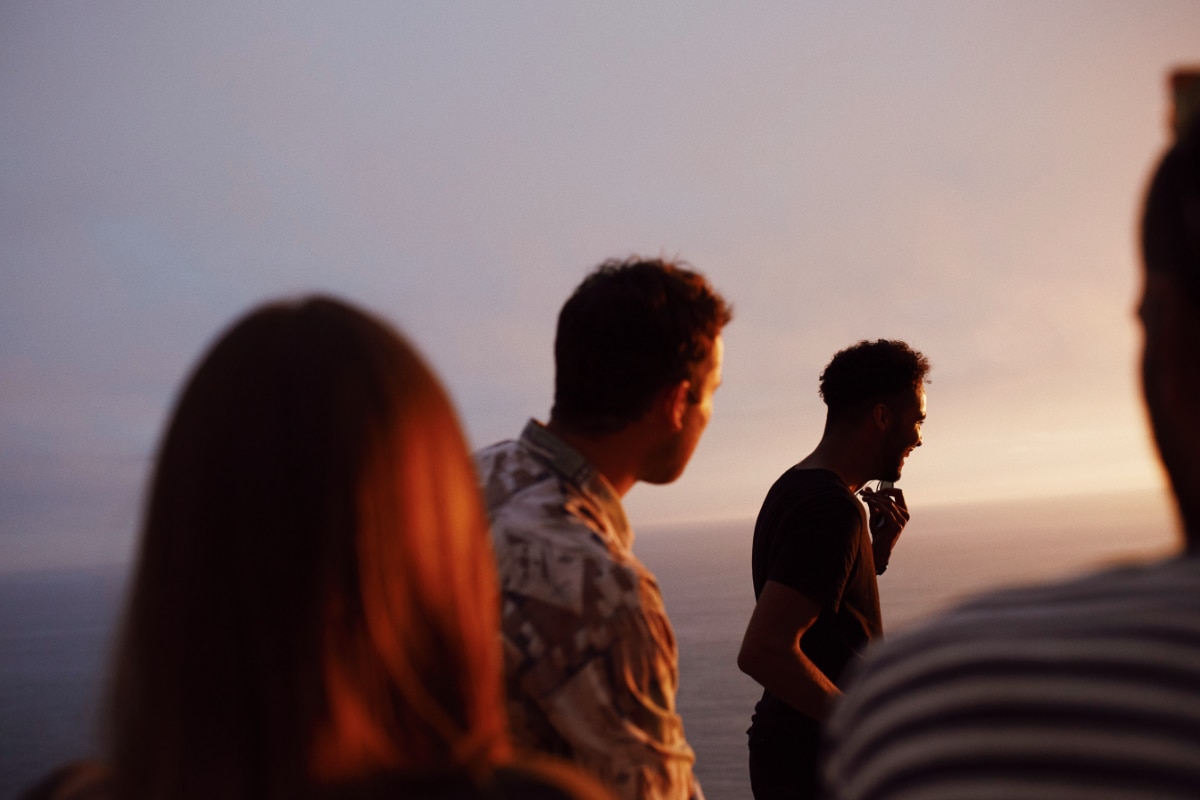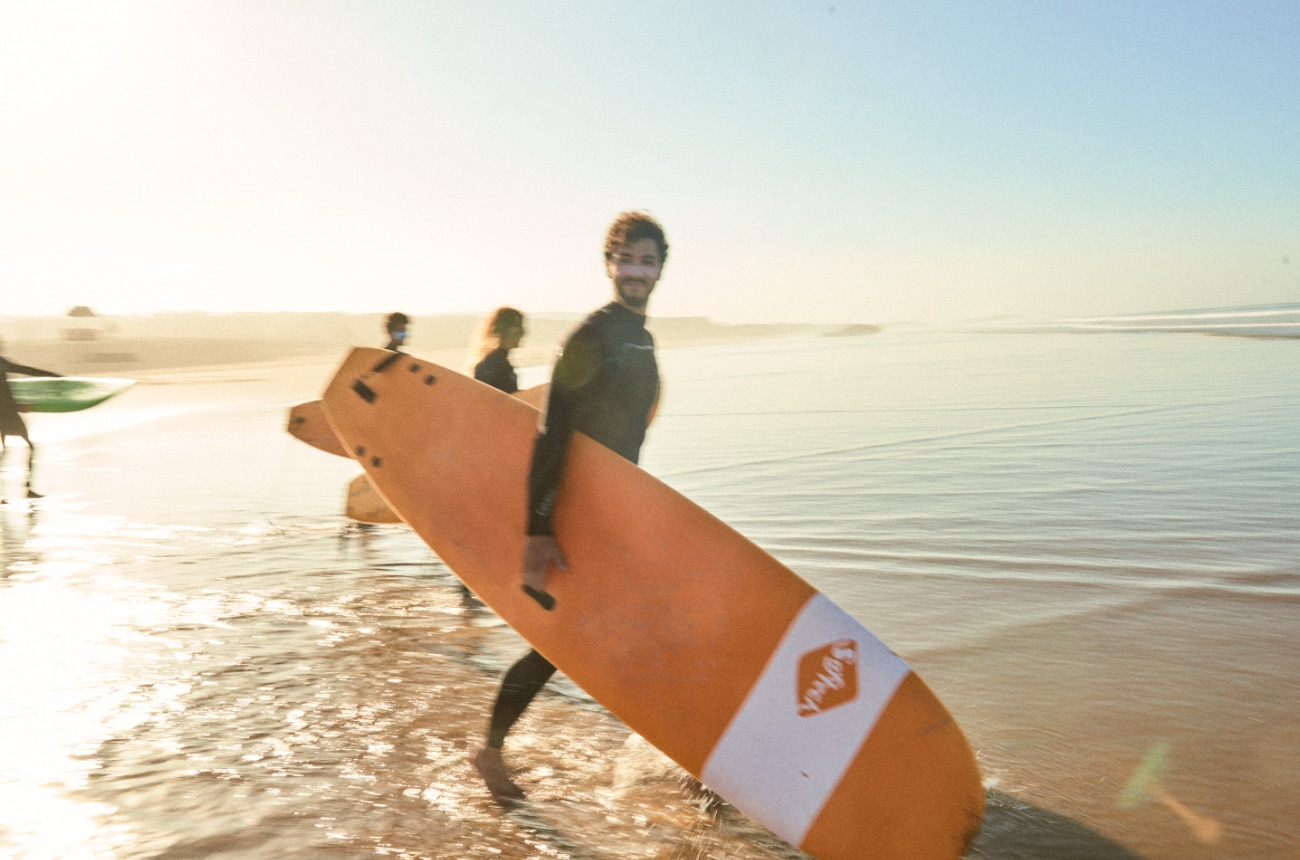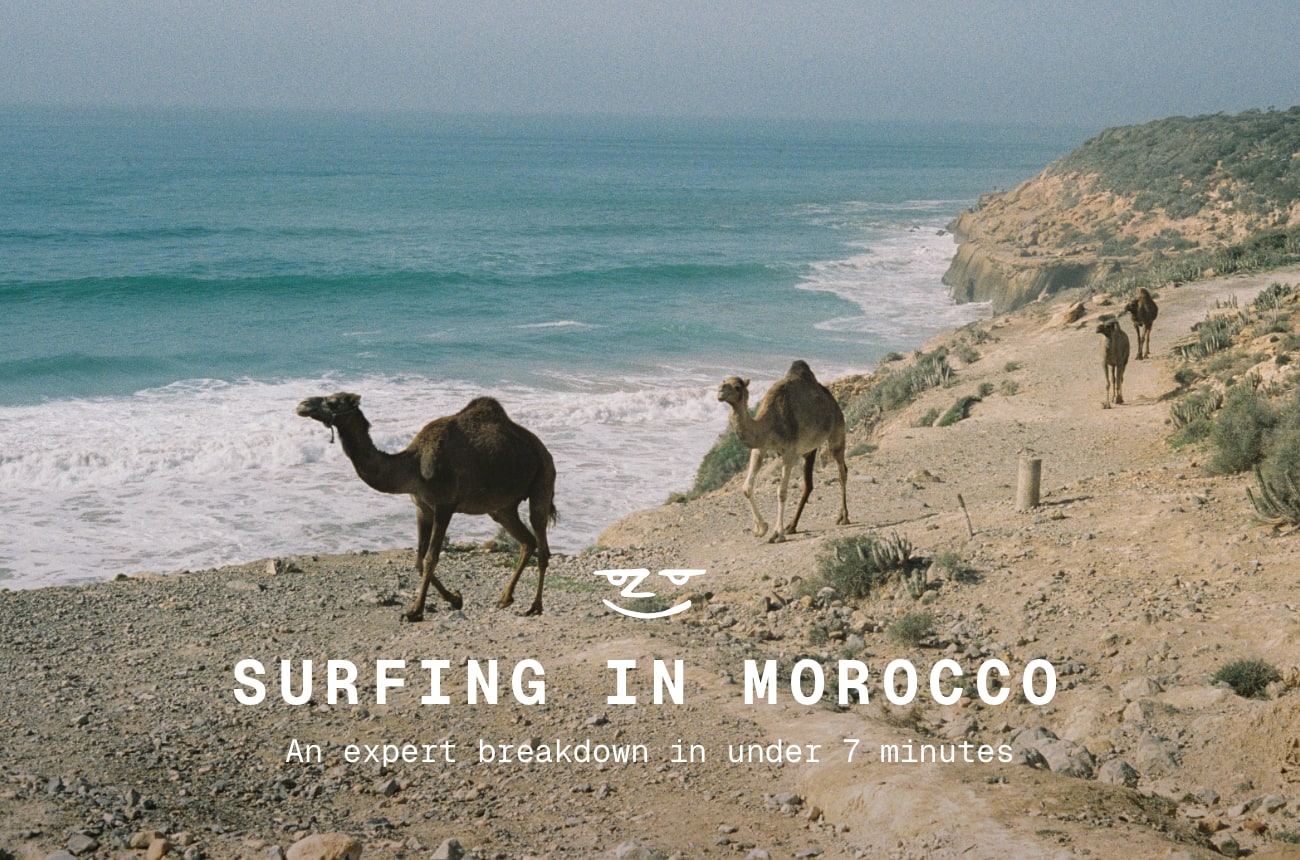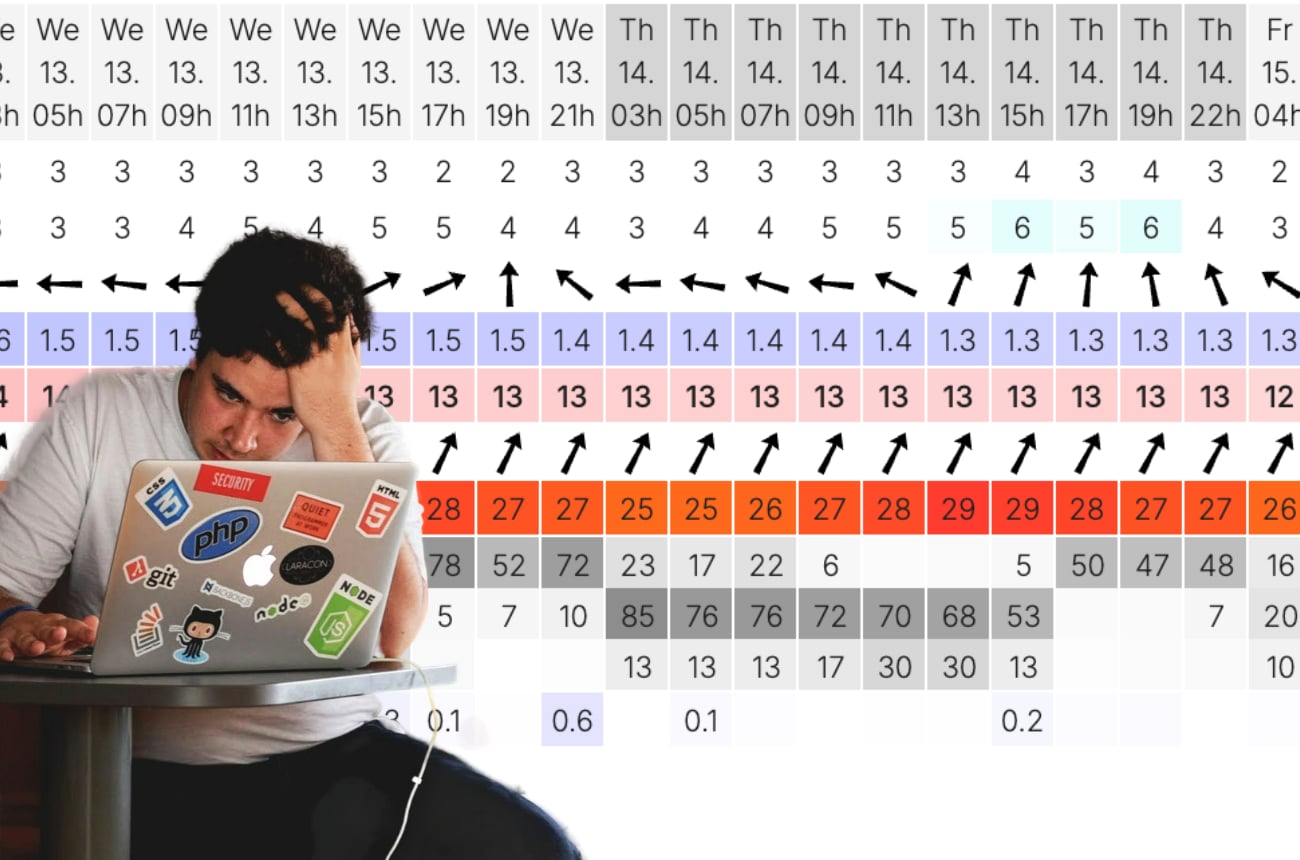The Azores flies under the radar when it comes to surfing destinations... and we have no idea why.
This exceedingly picturesque Portuguese archipelago, nestled in the heart of the Atlantic Ocean, has everything the adventurous surfer could want.
Playful beach breaks. Warm-ish water. Few crowds and plenty of opportunity for exploration. Did we mention the food, culture and landscapes are amazing too?
Yep, a surf trip to the Azores is waaay overdue.
If surfing the Azores sounds like your jam, this ultimate guide is for you. It covers everything you need to know, including when to go, where to surf and why this volcanic paradise is worth the trip.
Let’s go!
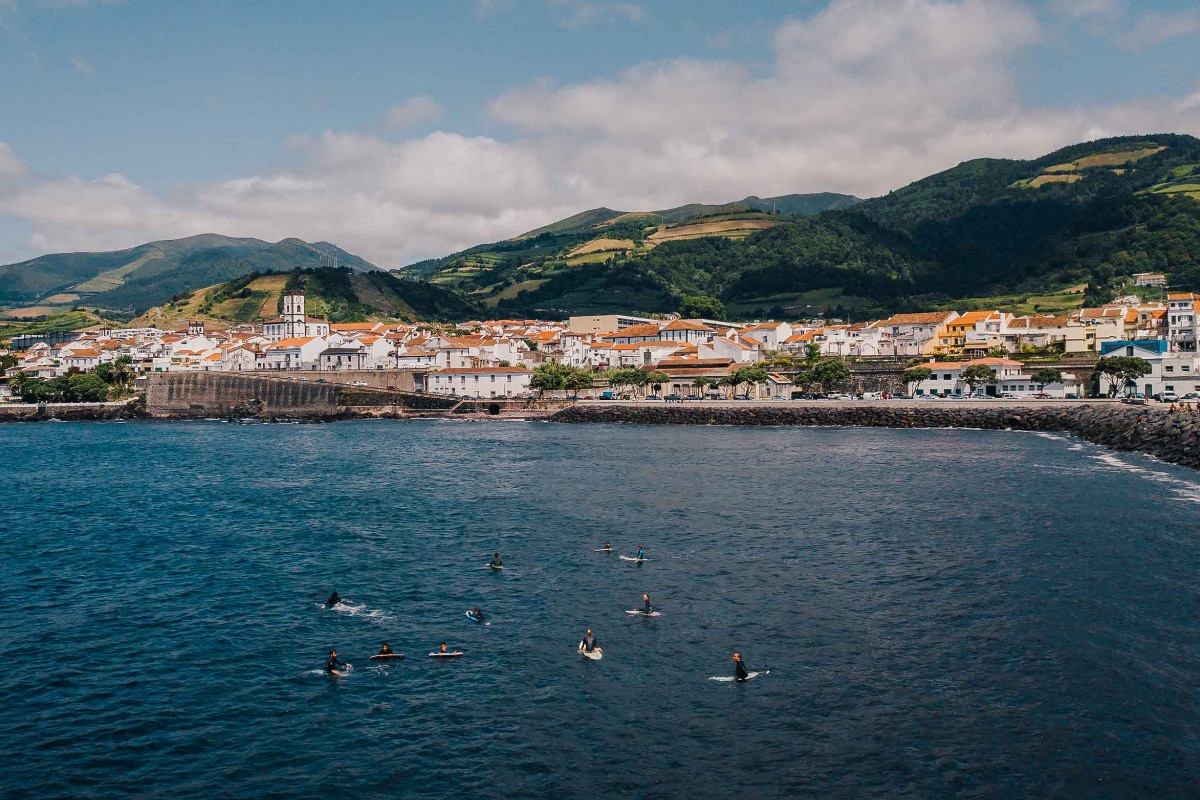
Where are the Azores?
The Azores are an autonomous region of Portugal, made up of nine volcanic islands about 1,500 km west of Lisbon.
It's a heavenly setting even by the most travelled surfer's standard. And the fact that you're in the middle of the Atlantic gives it a unique feel compared to other Portuguese islands.
The most popular islands for surfing are São Miguel, Terceira, São Jorge and Santa Maria.
São Miguel Island, the most populated island, is often the starting point for travelling surfers. João Paulo II Airport in Ponta Delgada serves as the main gateway.
Why surf the Azores?
While the Azores are technically part of Portugal, trust us when we say they feel like an entirely different world.
Hardly anyone thinks to come here for waves. Which is exactly the point.
That's not to say the surf breaks are bad, either. For those willing to cross 940 miles of Atlantic Ocean, you’ll find a raw, uncrowded surf scene that'll make you feel like a true surf explorer!
From beach breaks to reef breaks and volcanic shelves, reefs and rock-bottom points. The waves can get serious during the cooler months. But if that all sounds too hectic, you can easily find smaller, friendlier sand-bottom breaks.
- Consistent North Atlantic swells all year
- Empty lineups and a relaxed vibe
- Wild volcanic scenery unlike anywhere else in Europe
- Warmer water temperatures than most Portuguese coasts
- Heavy reef waves and challenging surf breaks for advanced surfers
- Fun, approachable surf for all skill levels in more sheltered areas
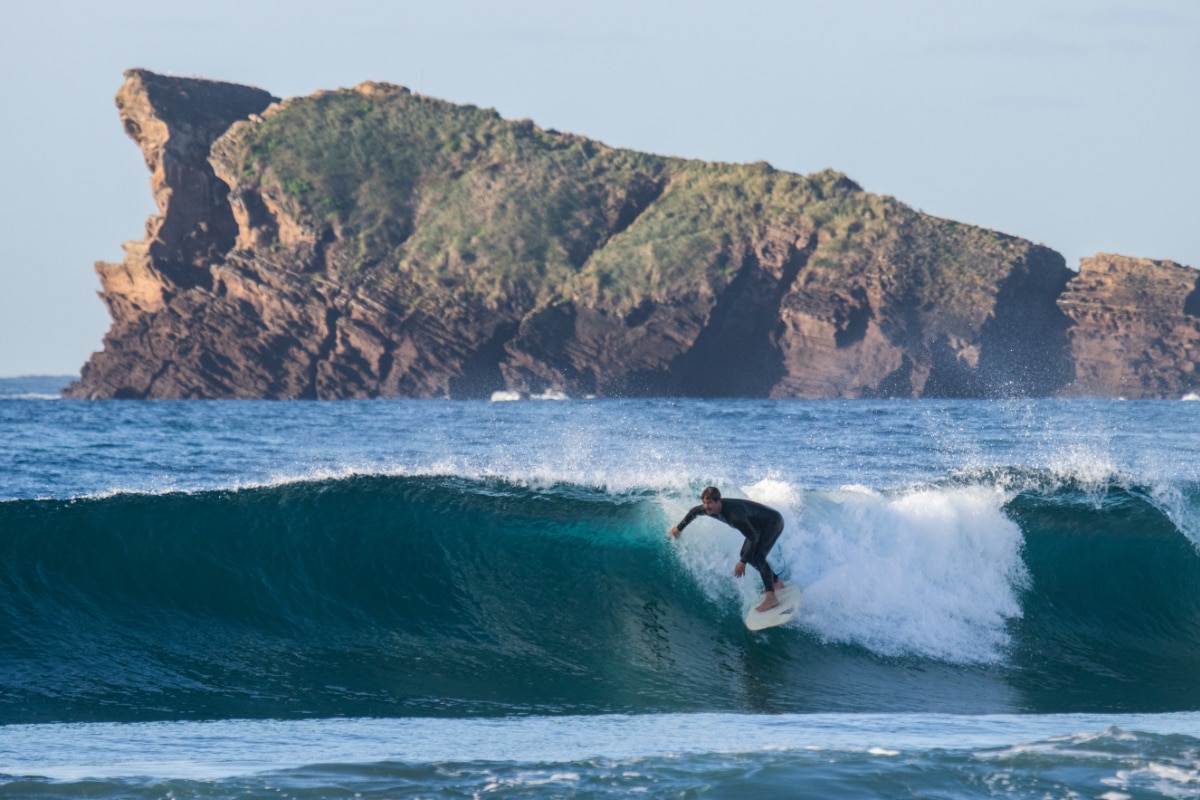
Azores surf seasons: When to go?
Surfing in the Azores can be done year-round. But certain seasons naturally suit certain skill levels more. Here’s a breakdown of each season based on its surfability and weather conditions.
- Autumn (September–November): Generally considered the sweet spot by locals. Swells are strong but manageable, offering consistent waves without the relentless size that winter can bring
- Winter (December–February): When the north Atlantic really delivers. Large, powerful winter swells march in from the northwest, lighting up the reef breaks and point breaks across the islands. This is prime time for experienced surfers eager to test themselves on heavier waves
- Spring (March–May): Another excellent window, balancing solid swell energy with more forgiving conditions and fewer crowds
- Summer (June–August): The busiest time for visitors, but you’ll still find waves. Occasional southern swells can sneak in as weather systems shift, waking up more sheltered surf spots on the south-facing coasts. On the northern shores, the surf tends to ease off into smaller, cleaner waves (perfect for beginners and intermediates looking for mellow sessions)
The best surf spots in the Azores
1. Santa Bárbara (São Miguel)
Easily the most iconic surf spot in the Azores archipelago. Santa Bárbara stretches along a wide black sand beach with countless peaks breaking along its length. Its like a giant skatepark, really. And with international and national surf competitions held annually, you can almost guarantee pumping waves. Sometimes heavy. Always fun.
2. Monte Verde (São Miguel)
This consistent beach break is known for its clean A-frames and playful waves that suit all skill levels. If the sand and swell lines up, you can expect punchy walls reminiscent of Supertubos (minus the crowds). In smaller surf, it’s a great place for beginners to take surf lessons or practice technique.
3. Rabo de Peixe (São Miguel)
Tucked below steep cliffs, Rabo de Peixe is a challenging reef break that feels like a colder version of an Indonesian point. It’s primarily a lefthander that reels fast over shallow reef when northeast swells arrive. It's not the most user-friendly surf spot, but still worth a look if you're keen for some reef break power.
4. Santa Catarina (Terceira)
The standout wave on Terceira Island. Santa Catarina is notorious for its power and the sketchy shallow reef beneath it. The bigger it gets, the crazier it gets. You're pretty much taking off straight into the tube. Worth a look when it's pumping, if only to see the locals charging.
5. Fajã dos Cubres (São Jorge Island)
A lesser-known gem, this left-hand point break on São Jorge Island peels over rocky shelves with surprising speed. Low tide draws a ridiculously large amount of water off the reef. You definitely don't want to botch the takeoff.
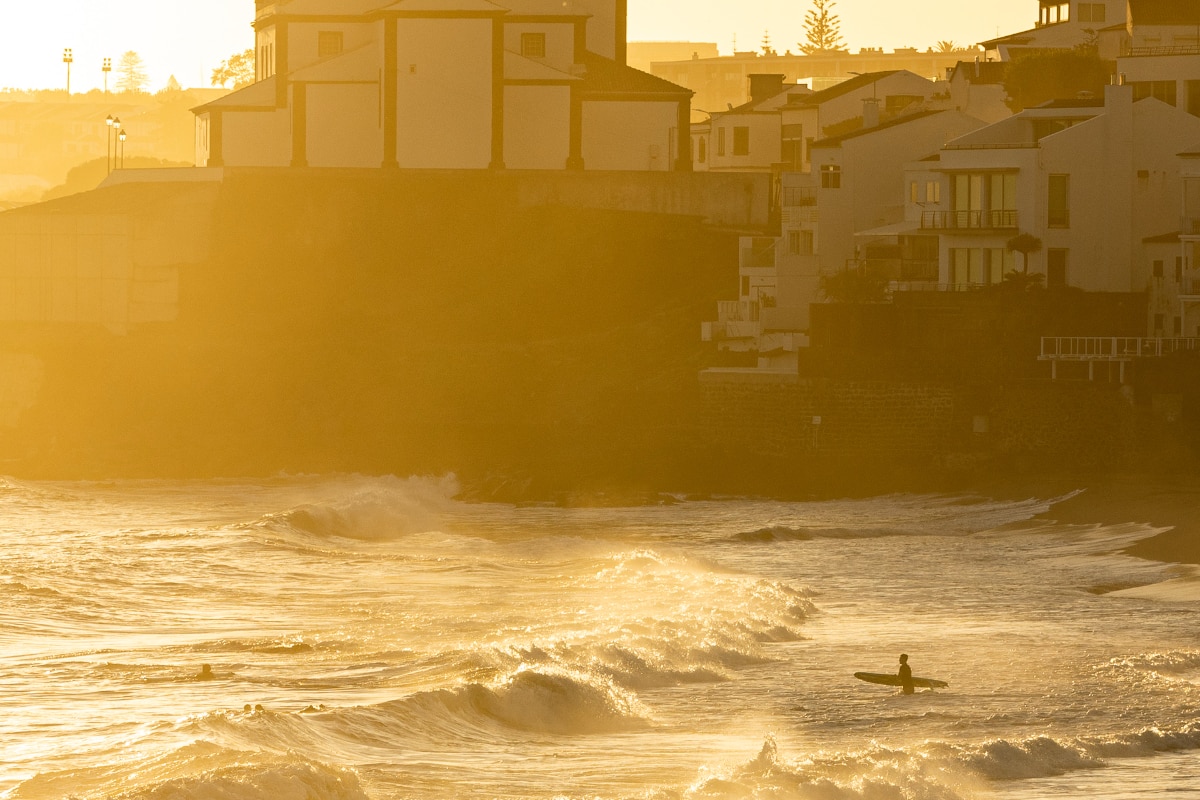
Getting to/from and around the Azores
Flights:
Direct flights from Lisbon and Porto run daily to São Miguel Island (Ponta Delgada), with connections to the other nine islands, including Terceira, Santa Maria island and São Jorge. João Paulo II Airport is the main hub. There are also ferries that go between the islands in the warmer months.
Transport:
Renting a car is essential to explore the best surf spots, hidden beaches and secret breaks. Roads are well-maintained and most places can be reached within one or two hours.
Surfing the Azores: FAQ
Q. What are the crowds and vibe like?
Compared to mainland Portugal, the Azores remain refreshingly uncrowded. Even at the more popular surf spots you’ll find plenty of space. The local surf scene is friendly and welcoming. Just remember to respect the lineup and local etiquette!
Q. Do I need to bring my own surfboard or can I rent gear locally?
You don’t have to bring your own. São Miguel has shops with a good selection of rentals. In saying that, we recommend bringing your own board and gear if you have it. This way you can maximise your time in the water.
Q. Is the Azores a good place to learn to surf?
Yes. While there are challenging reef breaks for advanced surfers, plenty of beach breaks and surf schools cater to beginners. Summer is the best season for learning, but in reality you can find sheltered, gentle waves all year round due to the fact that the nine islands face different swell directions and have a variety of surf spots offering protection from larger winter swells.
Q. What’s the best way to check surf conditions before heading out?
Use forecast sites like Magicseaweed or Windguru. Our local team is also adept at monitoring conditions so we put you in the best spots at the best time.
Q. What else is there to do in the Azores when the waves are flat?
You can hike volcanic trails, explore black sand beaches, go whale watching, or discover amazing food and wine. There’s no shortage of off-surf adventures across these Portuguese islands.
Q. What’s the accommodation like for surfers in the Azores?
There’s a good mix of surf hostels, guesthouses and ocean-view hotels. If you’d rather not organise everything yourself, we run all-inclusive trips through our local partner with accommodation, surf guiding, meals and everything else you need for a hassle-free surf holiday.



